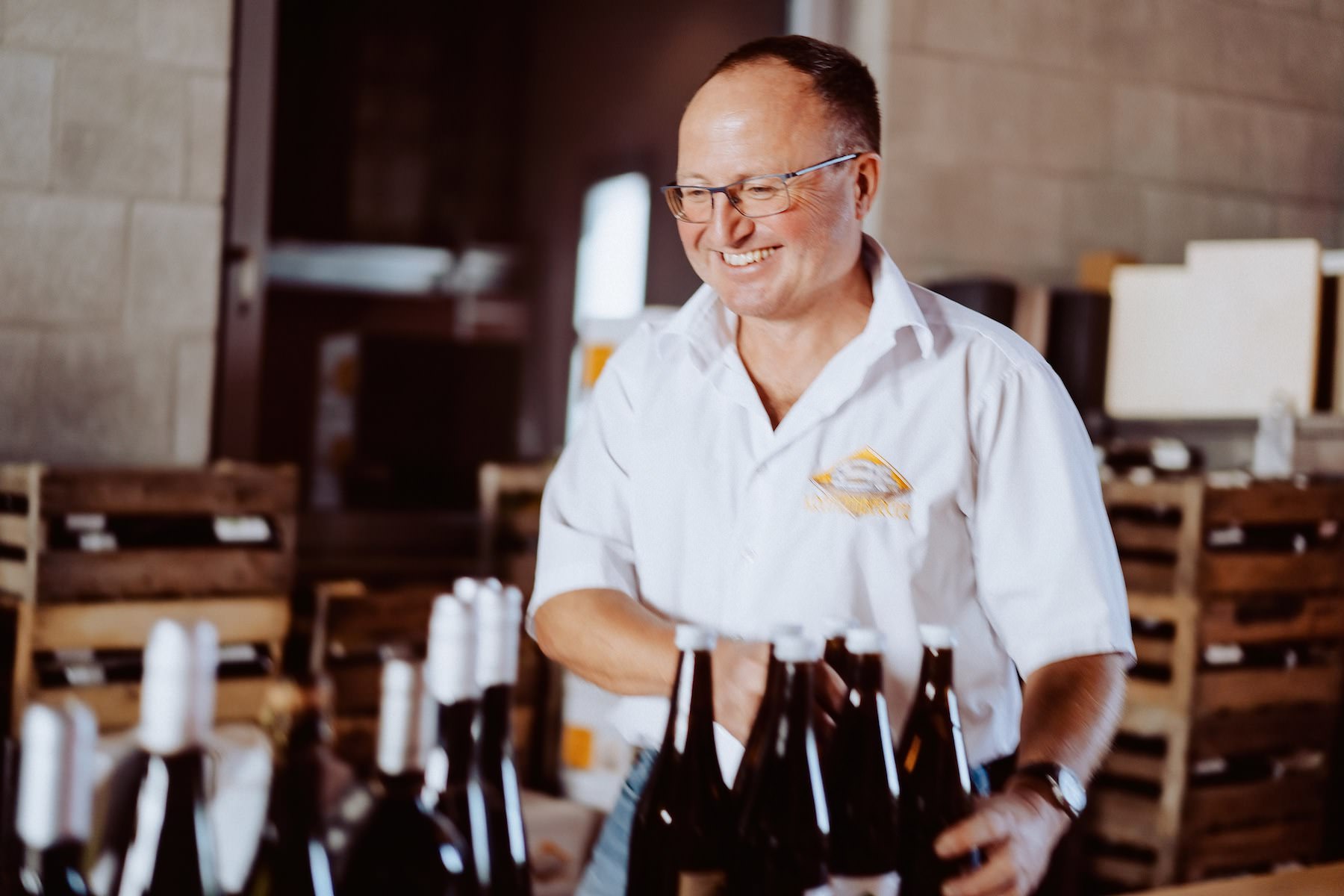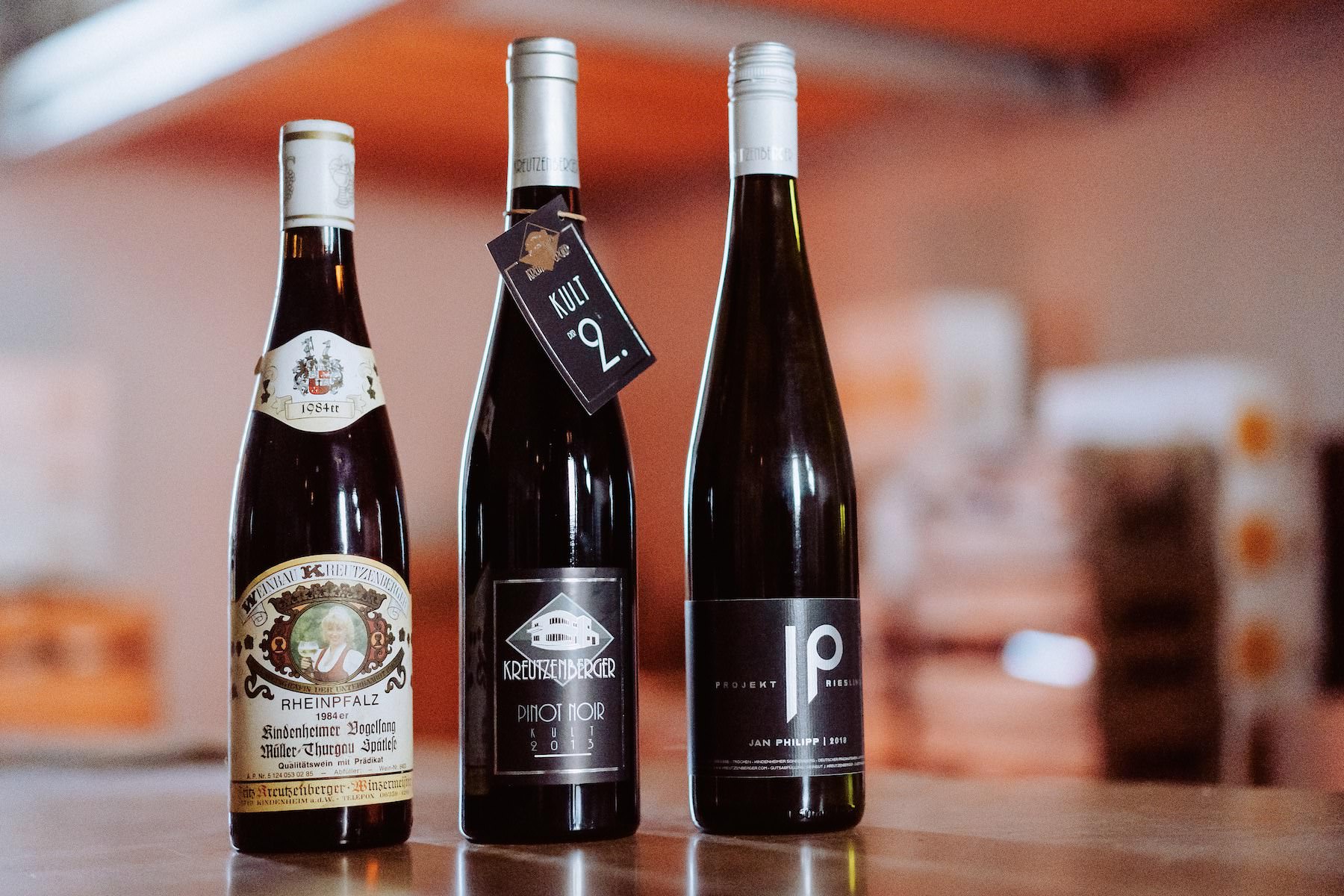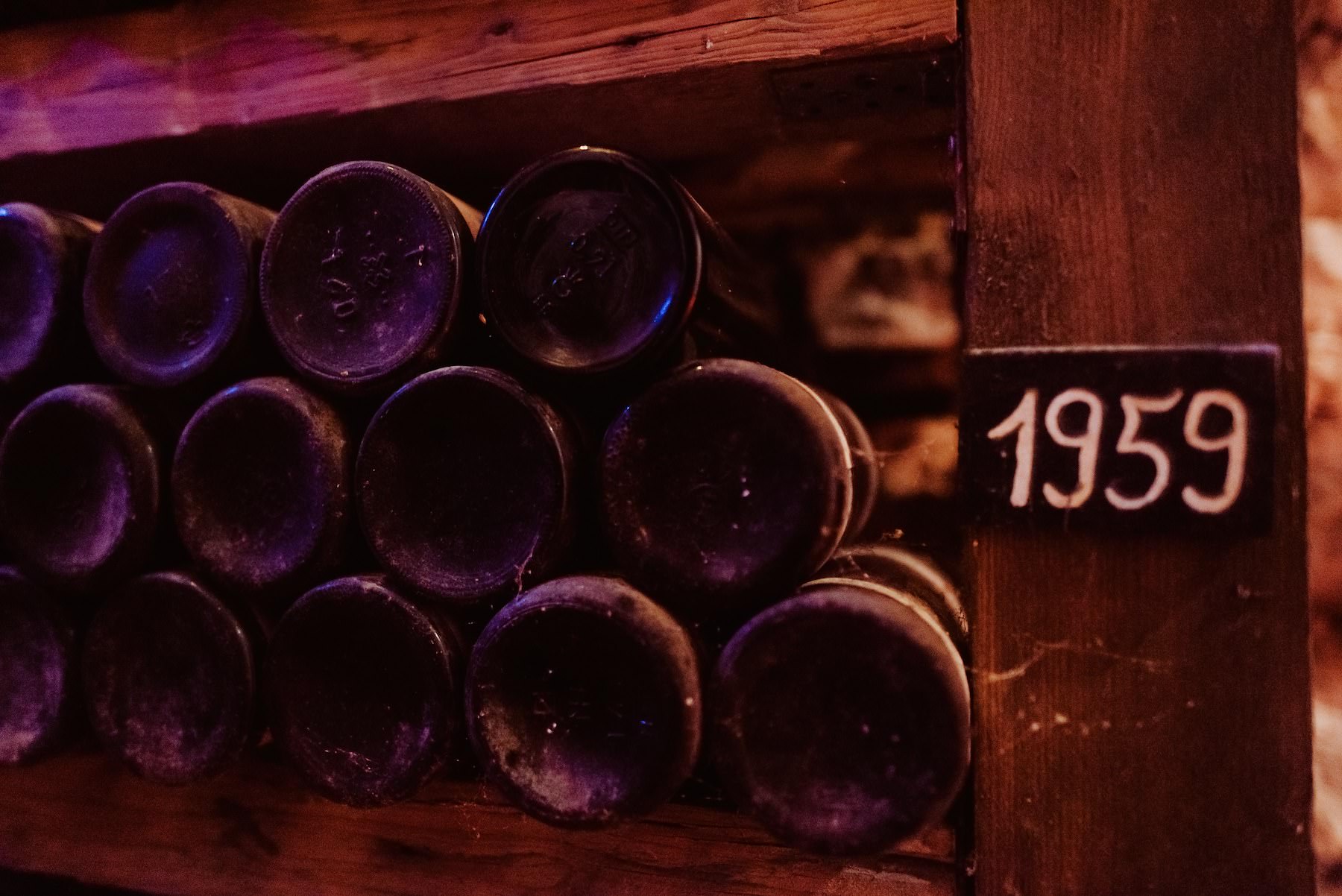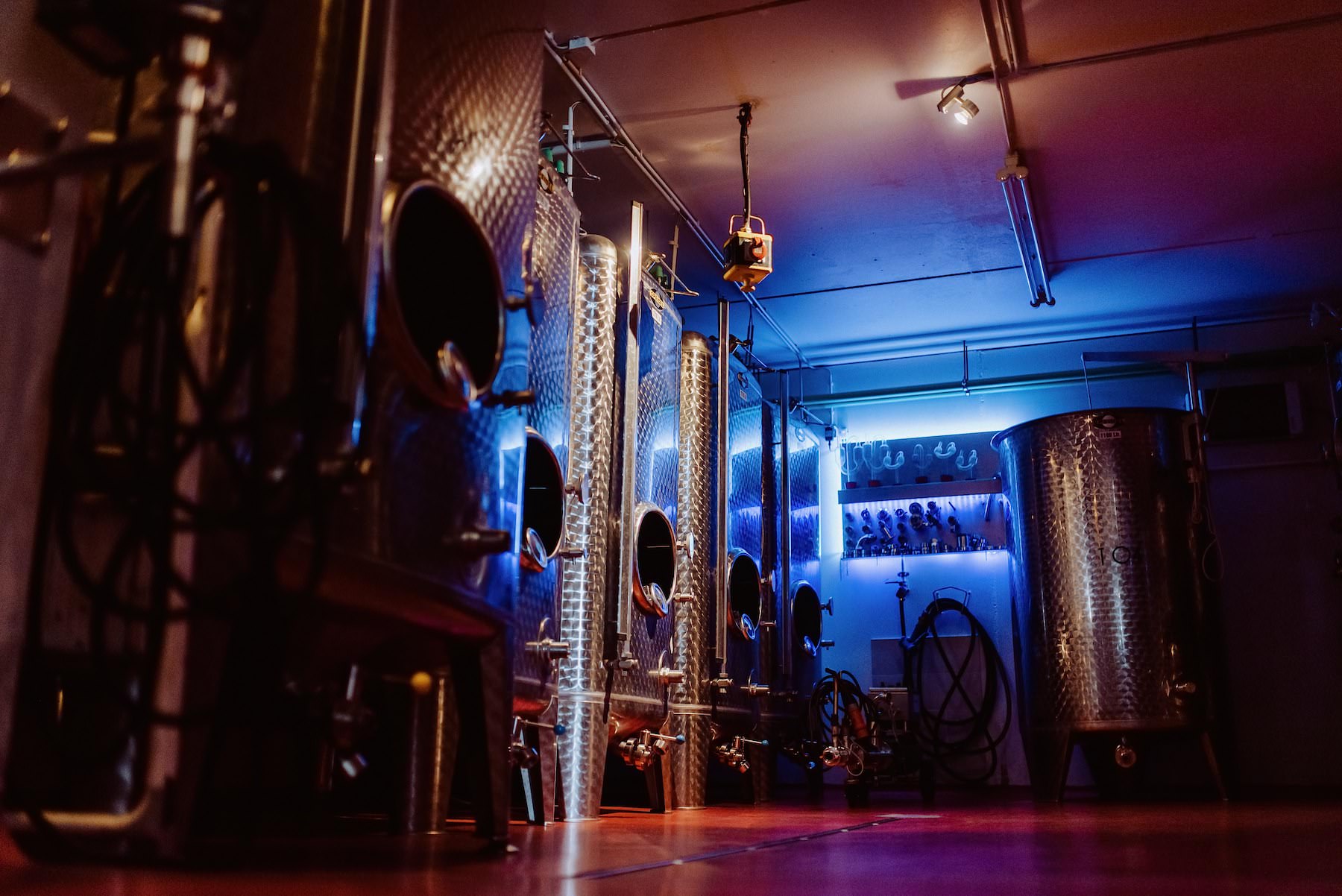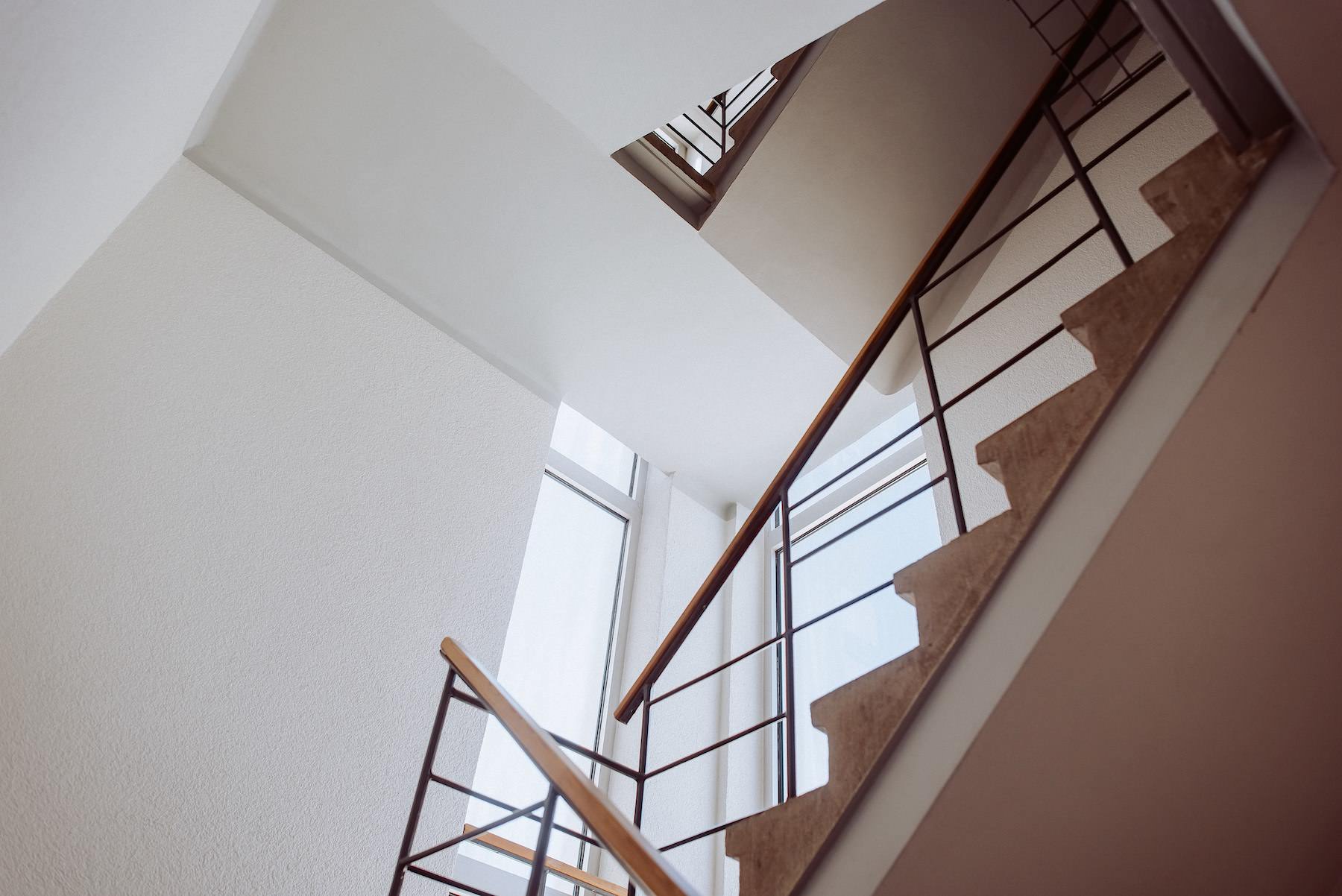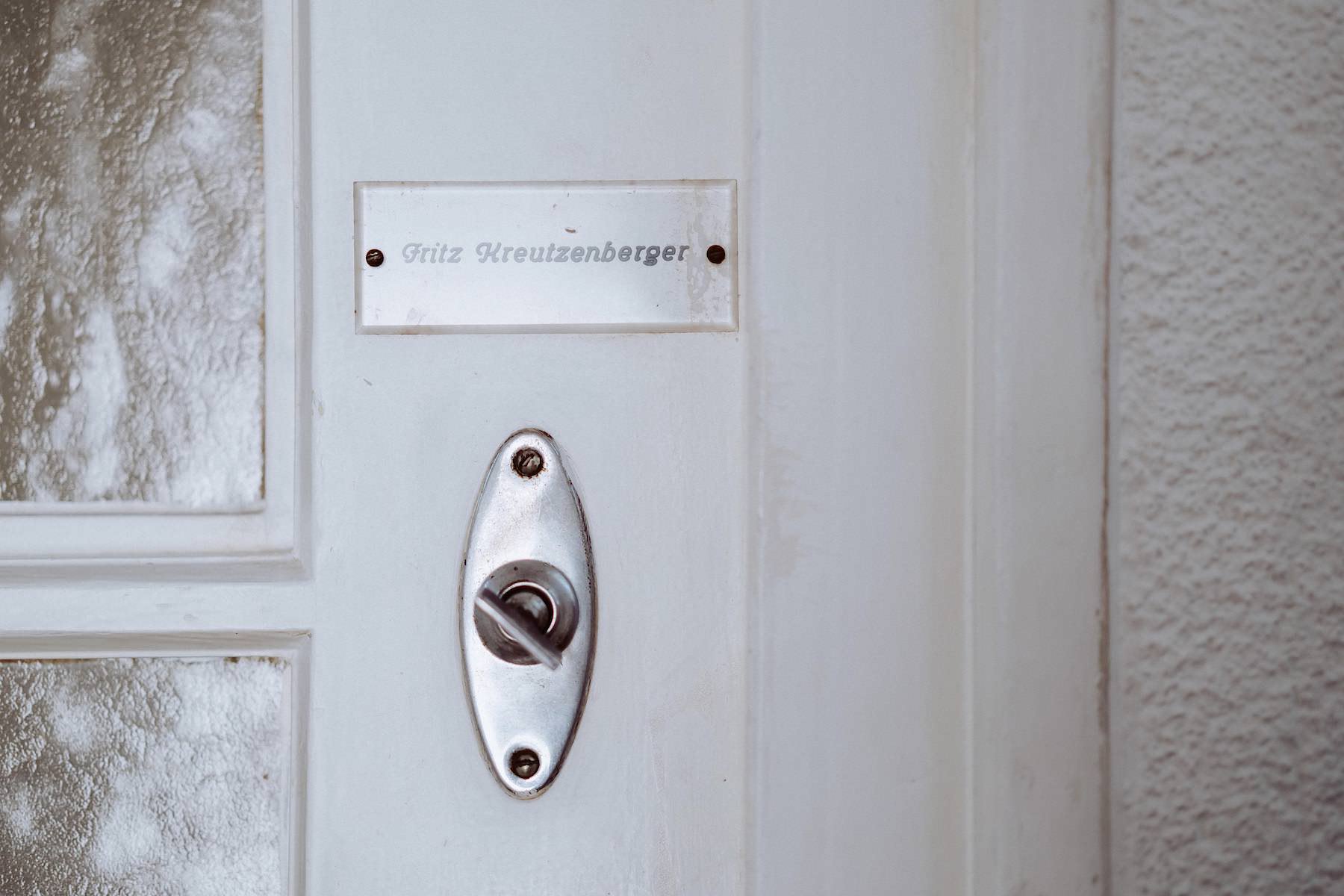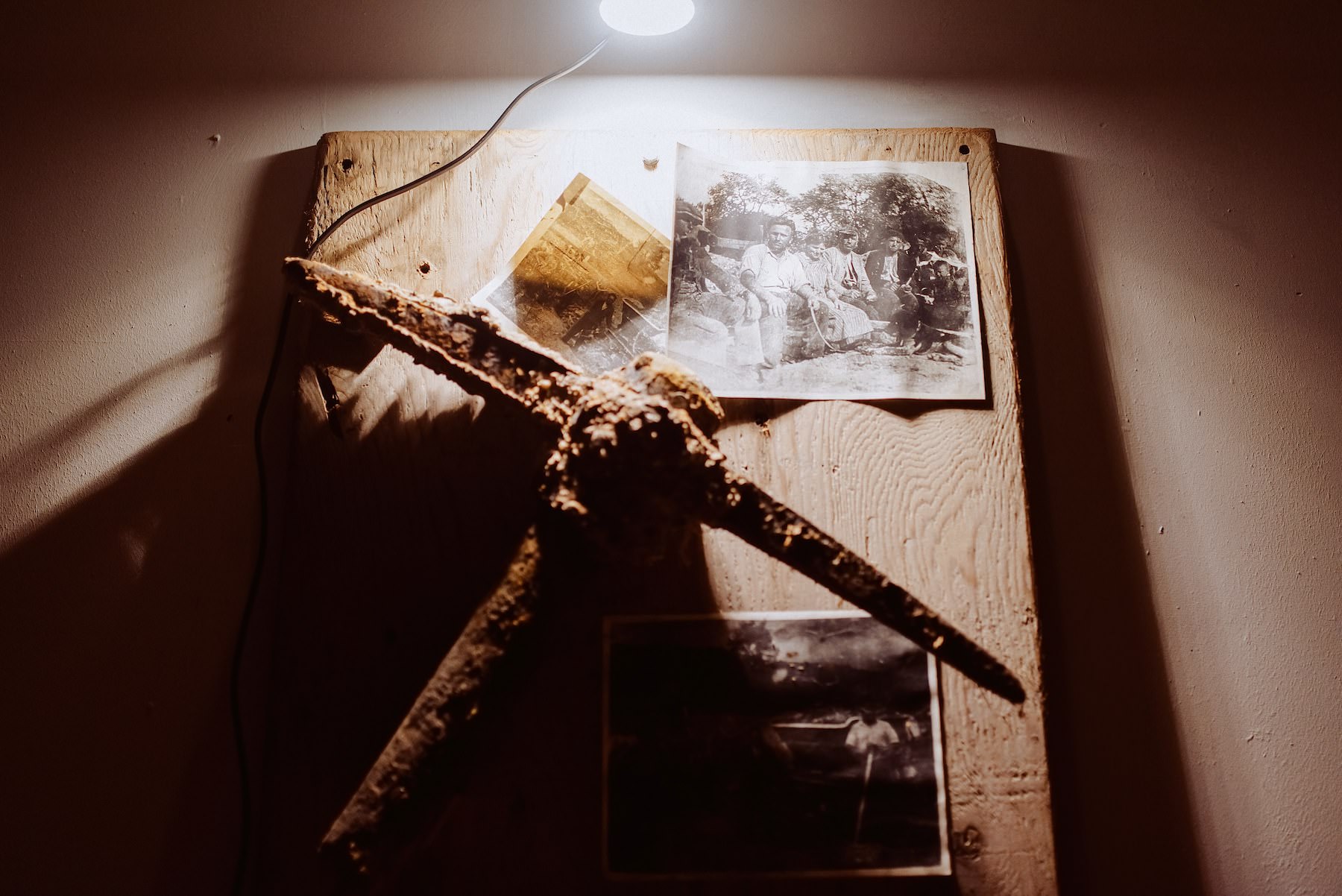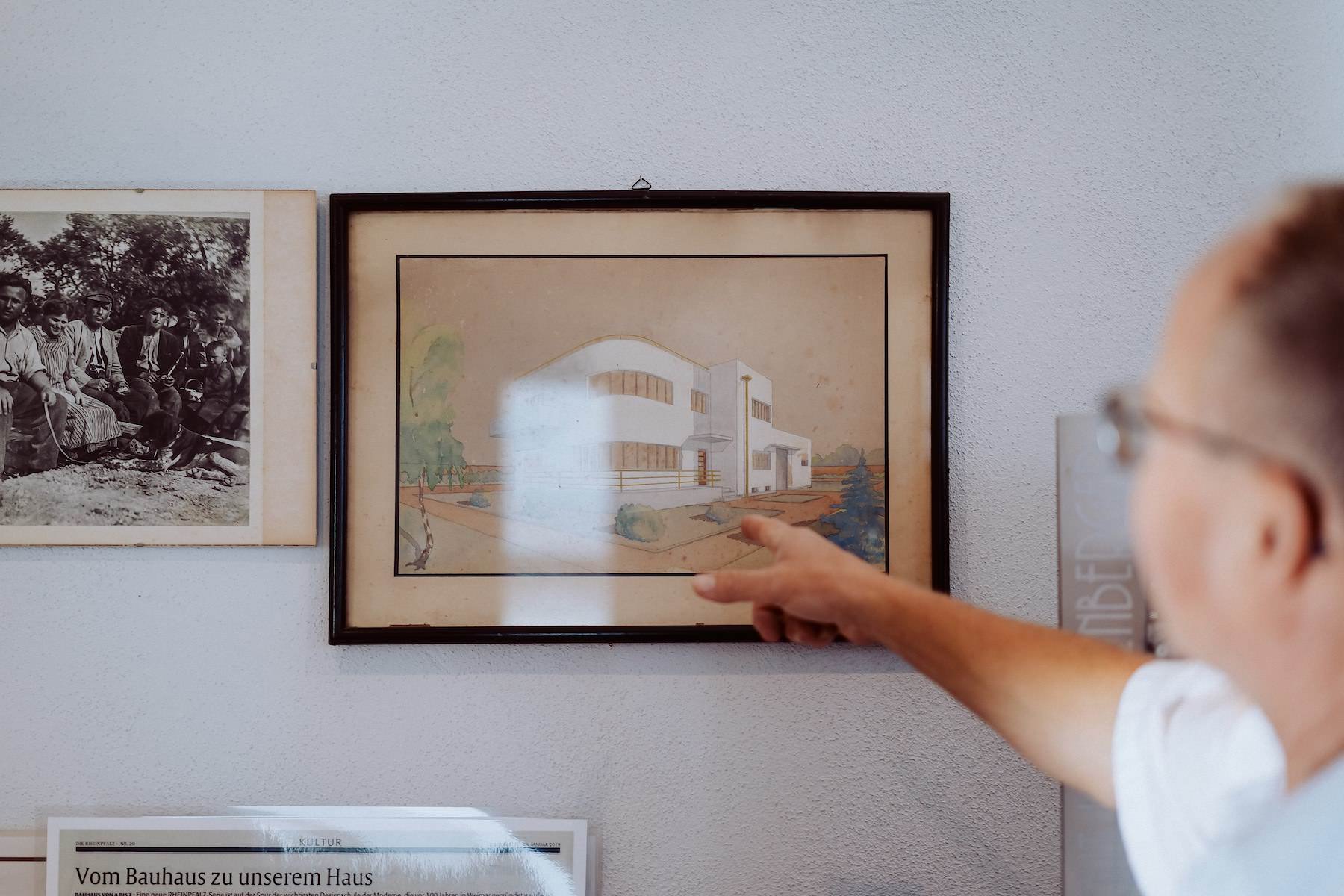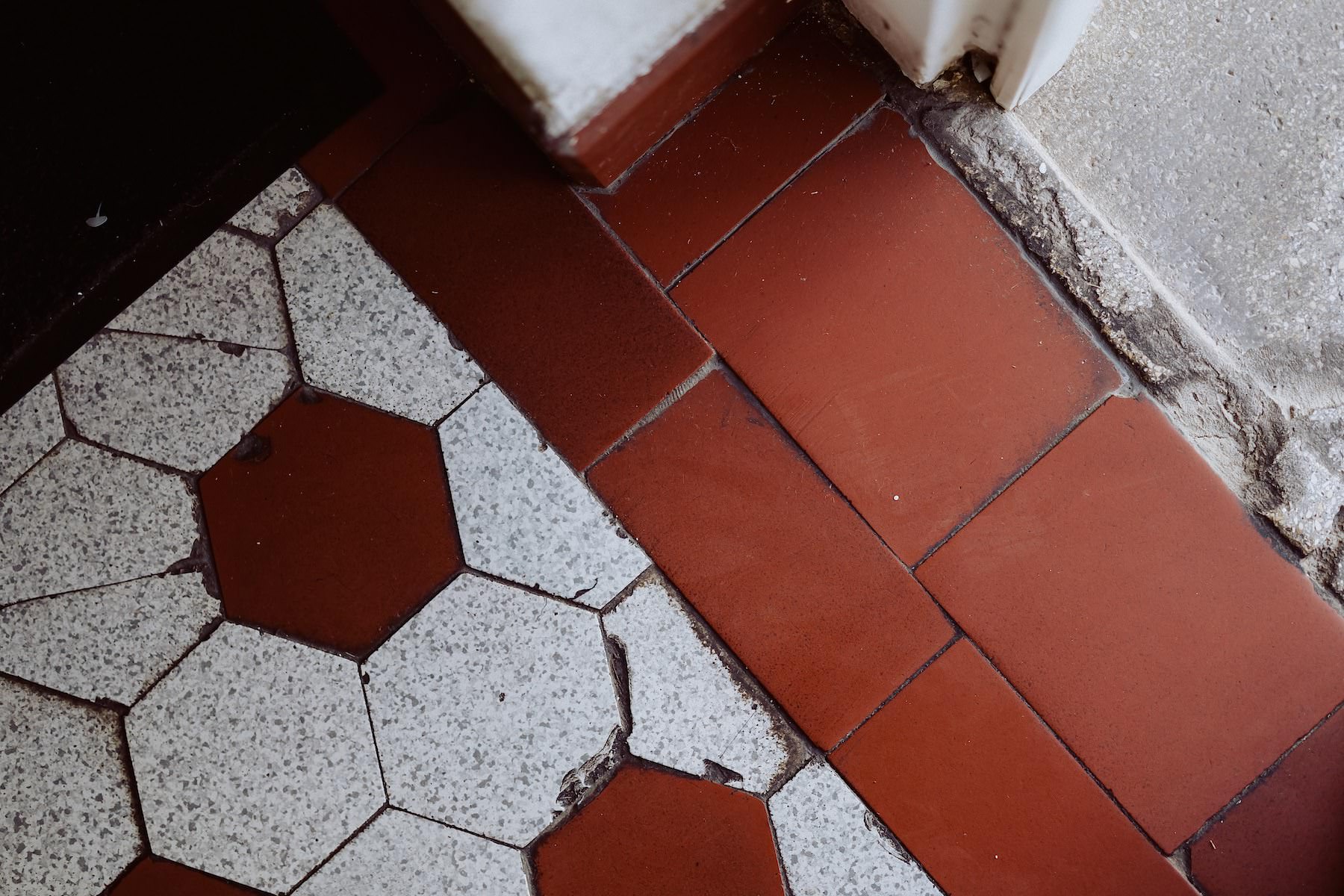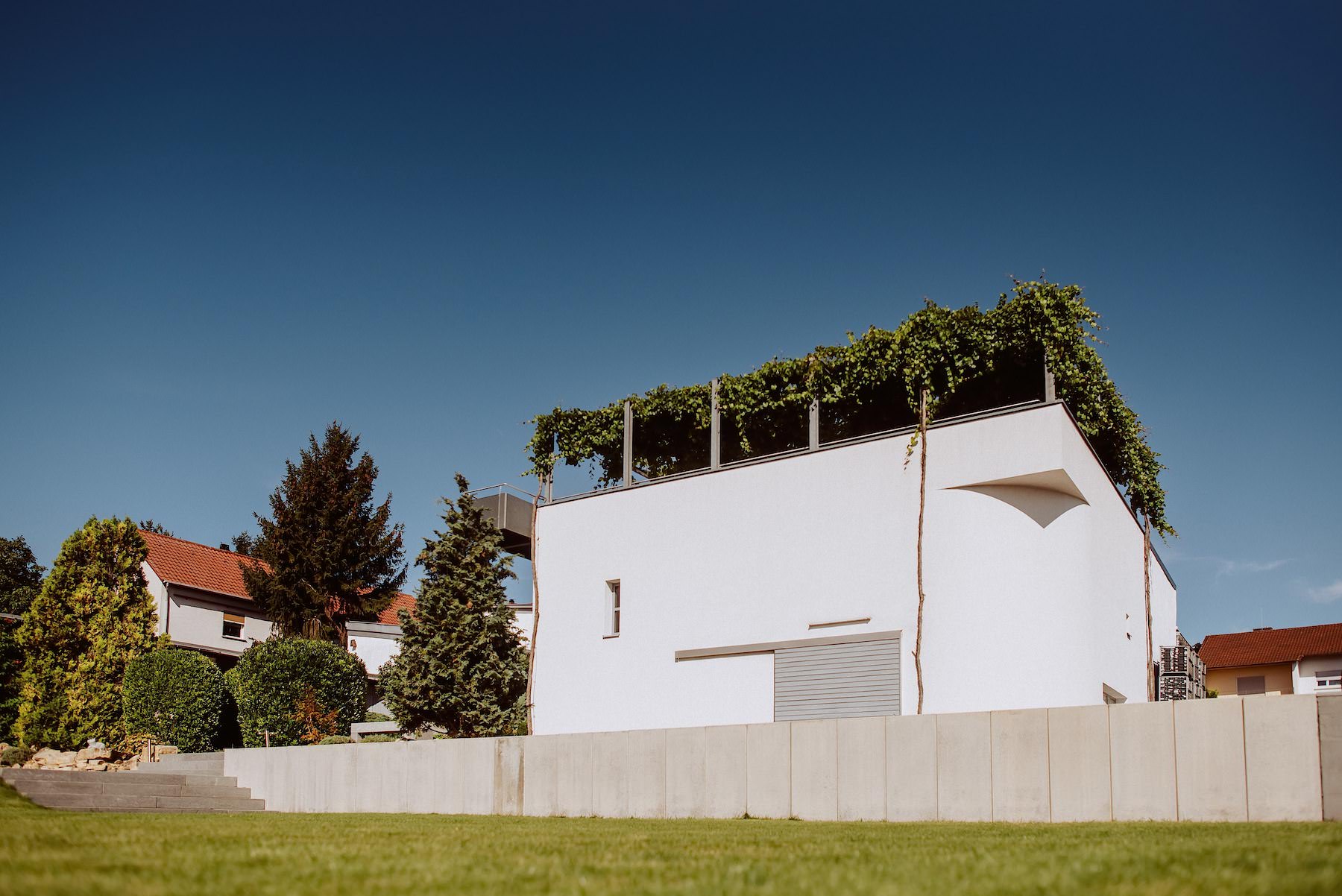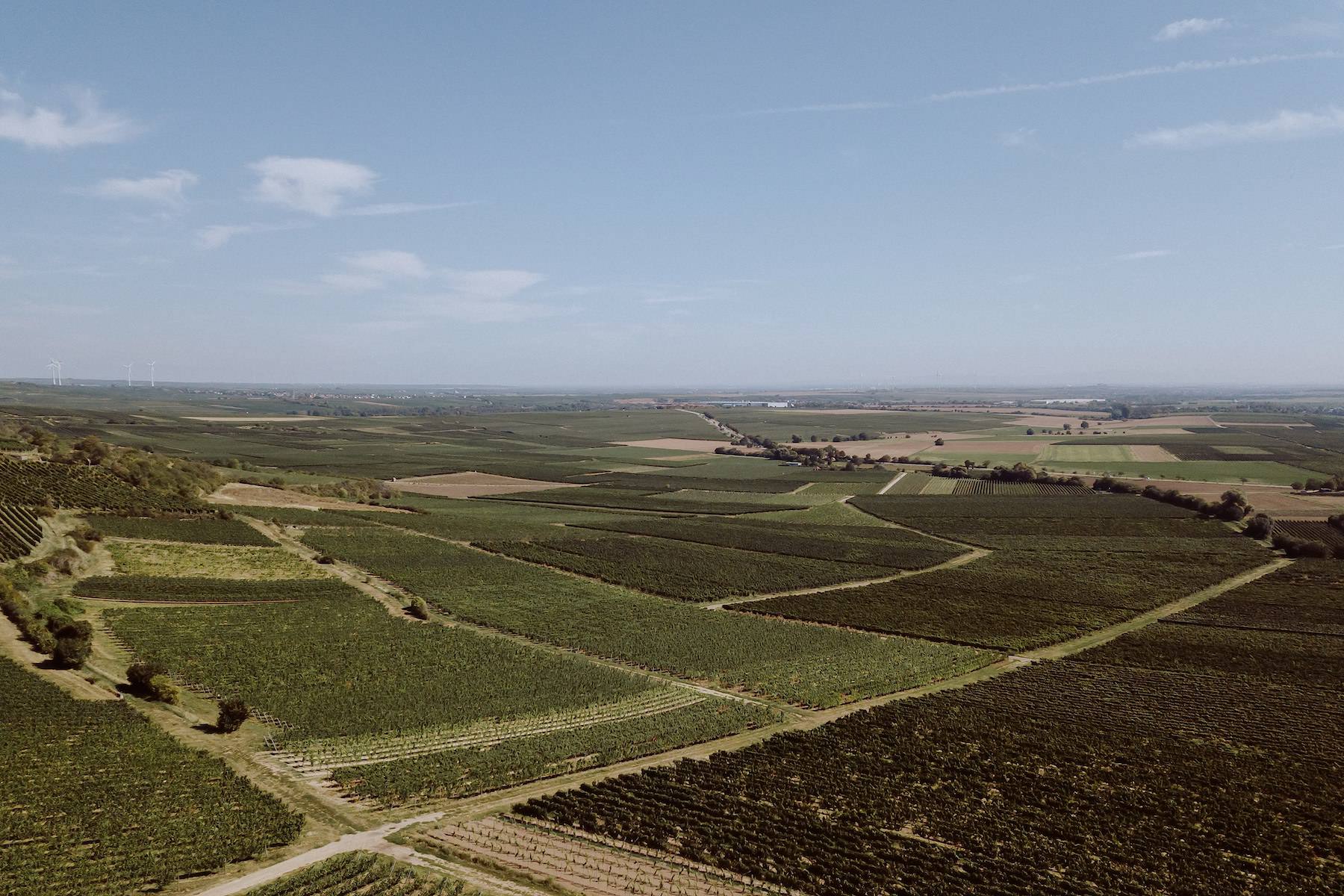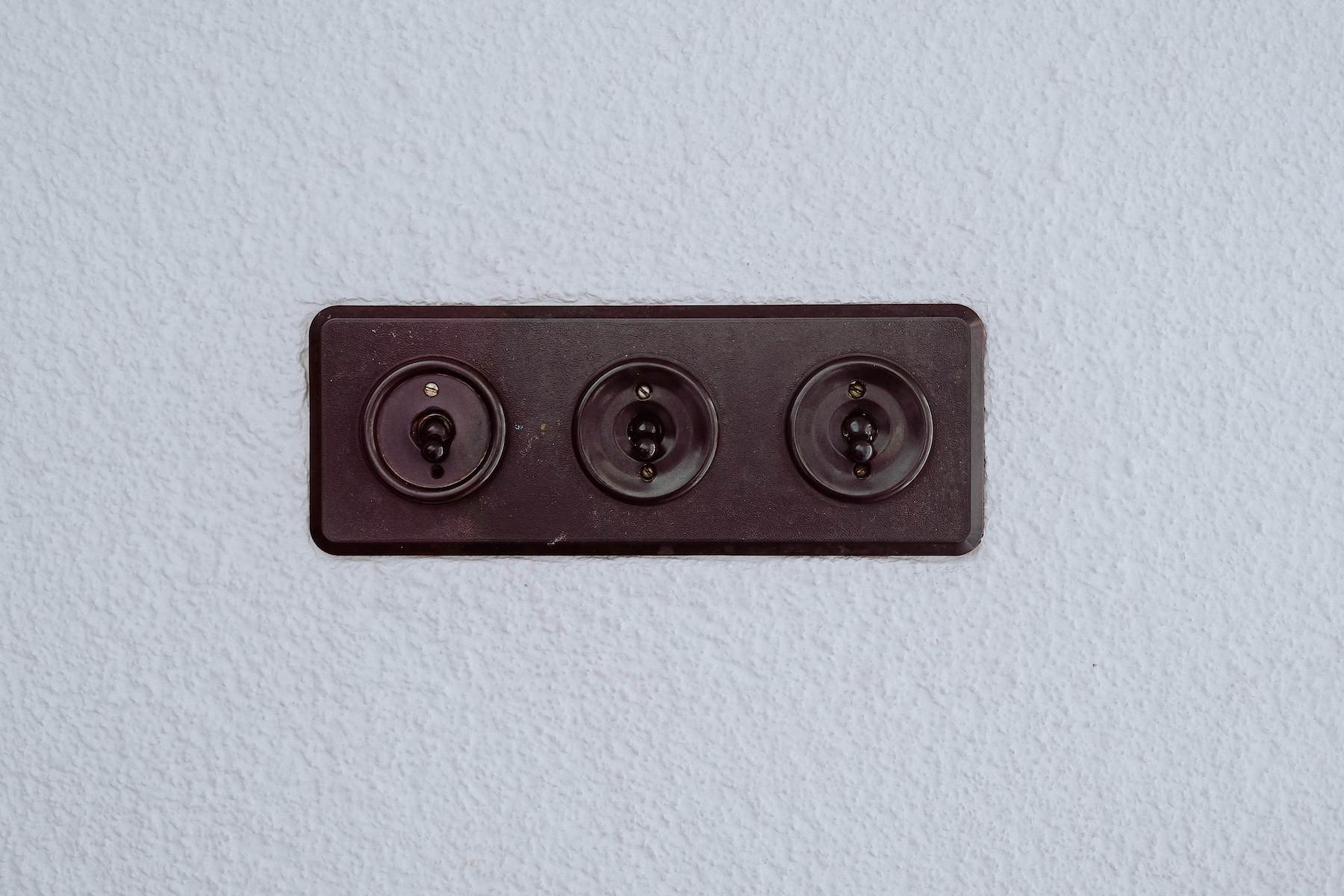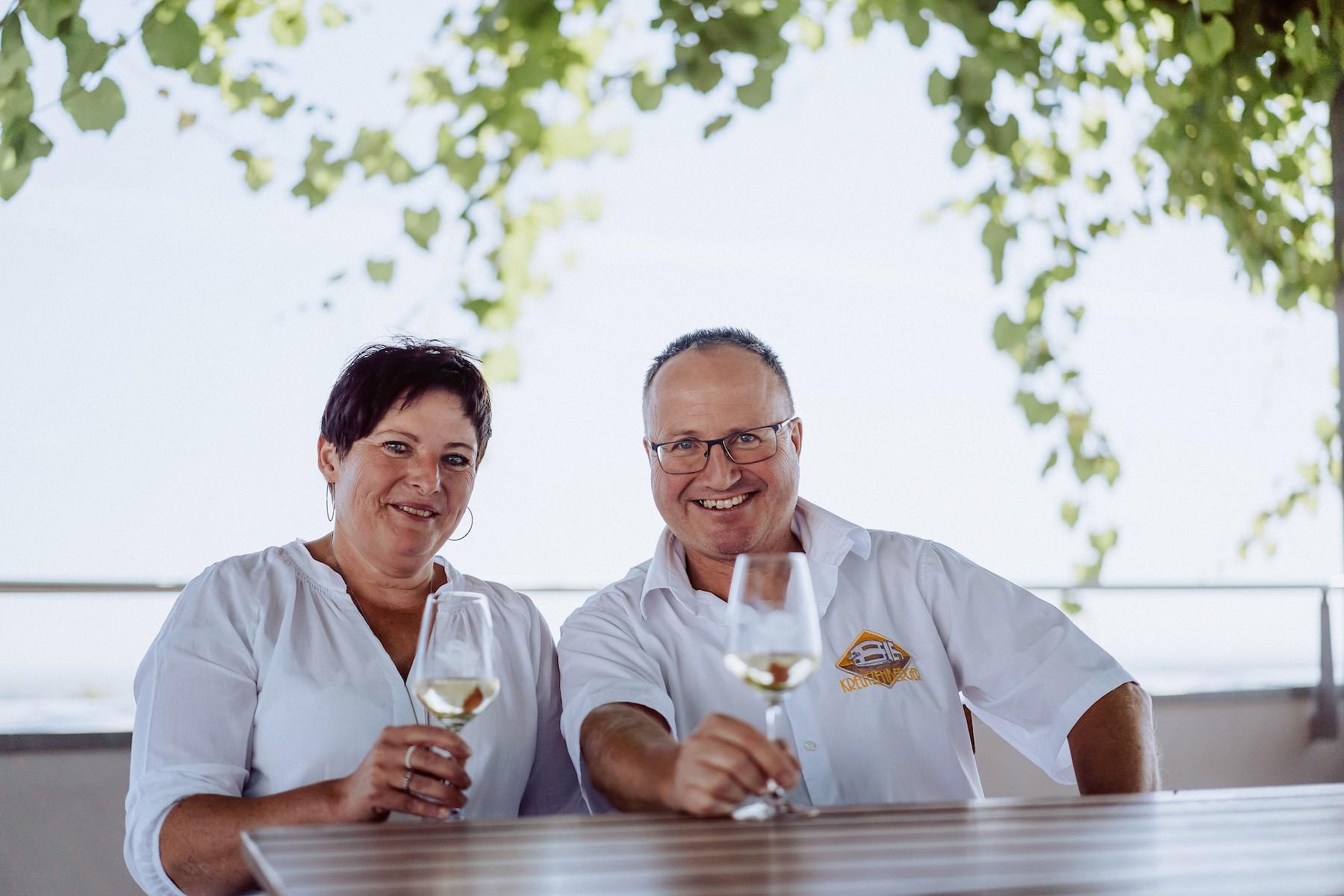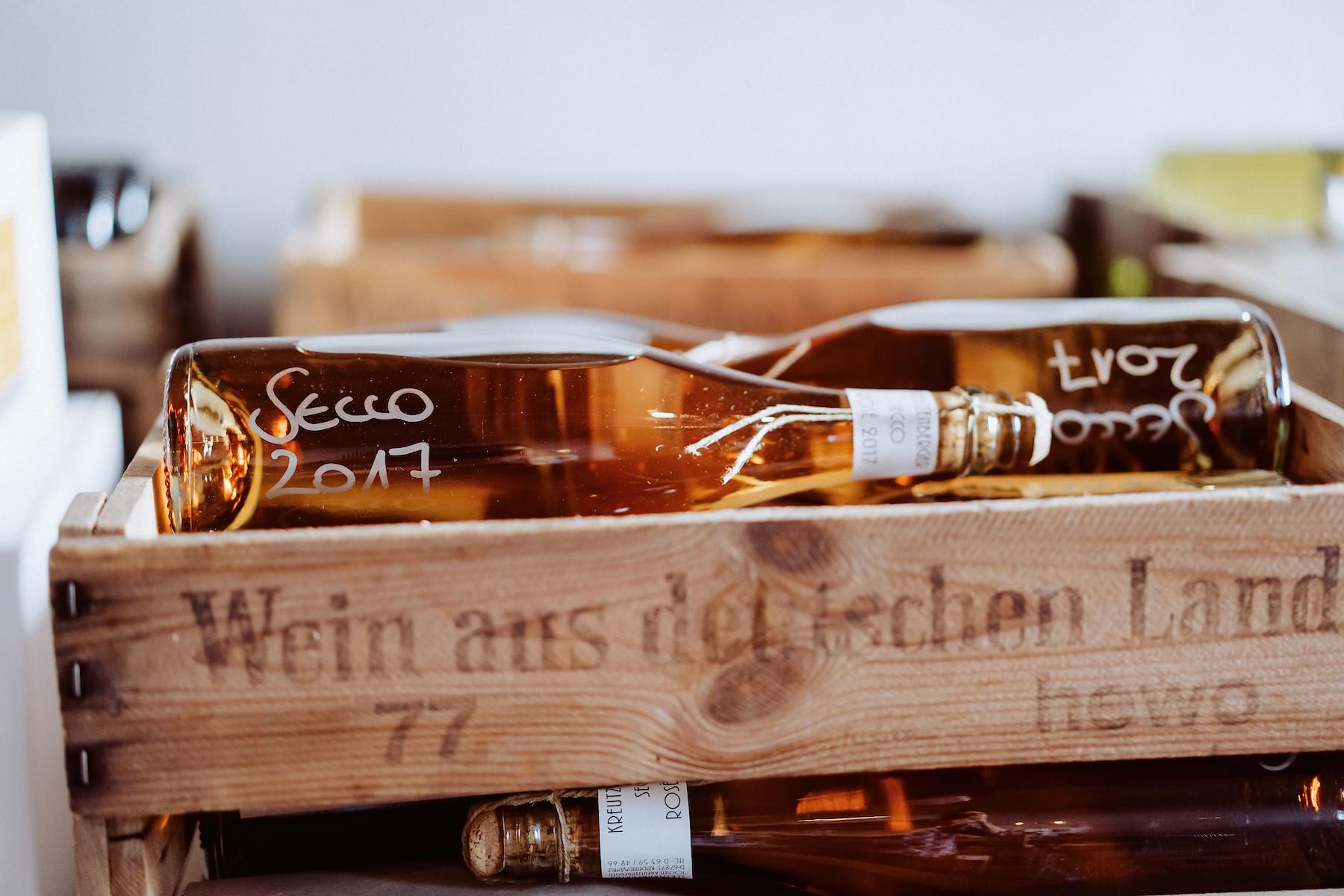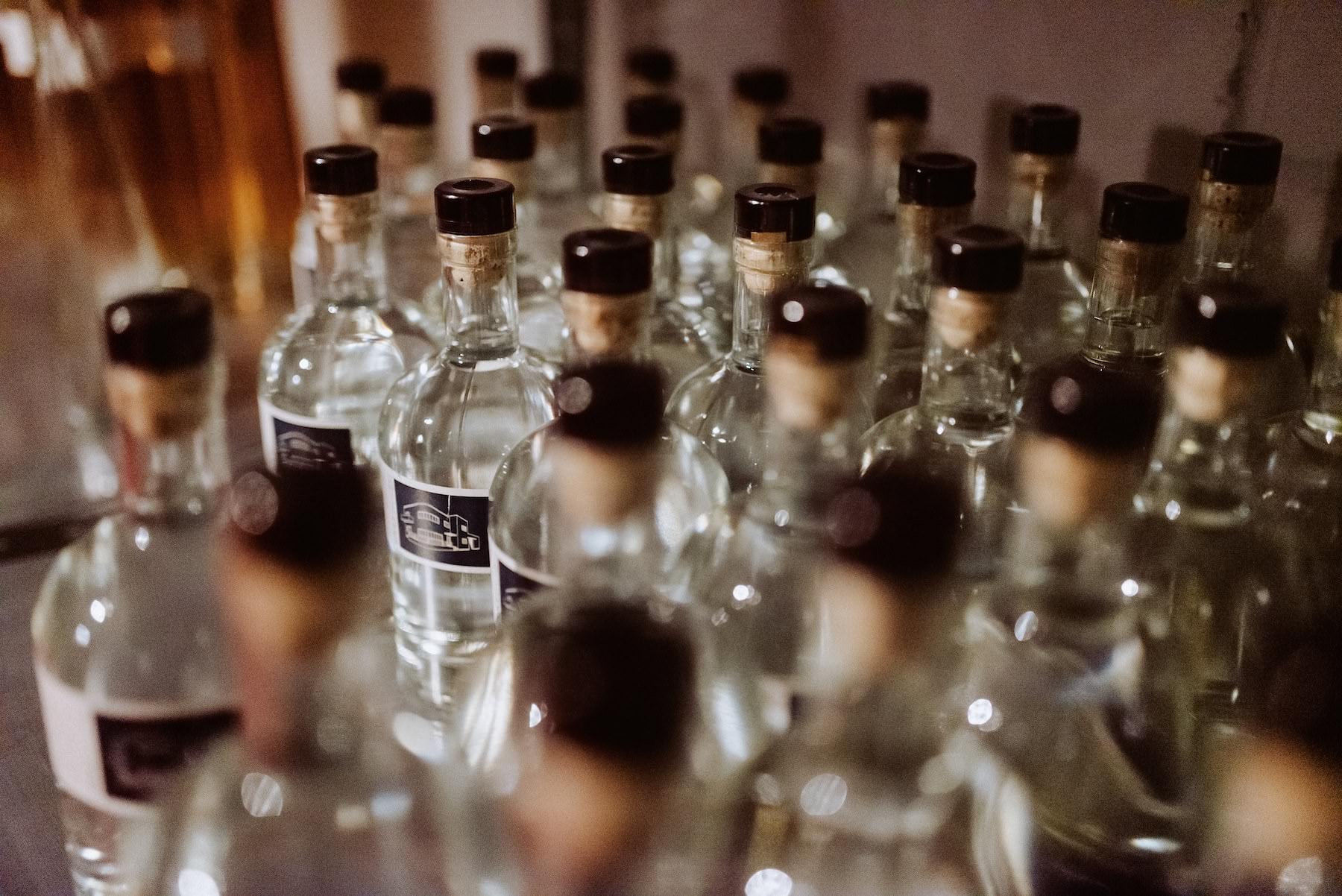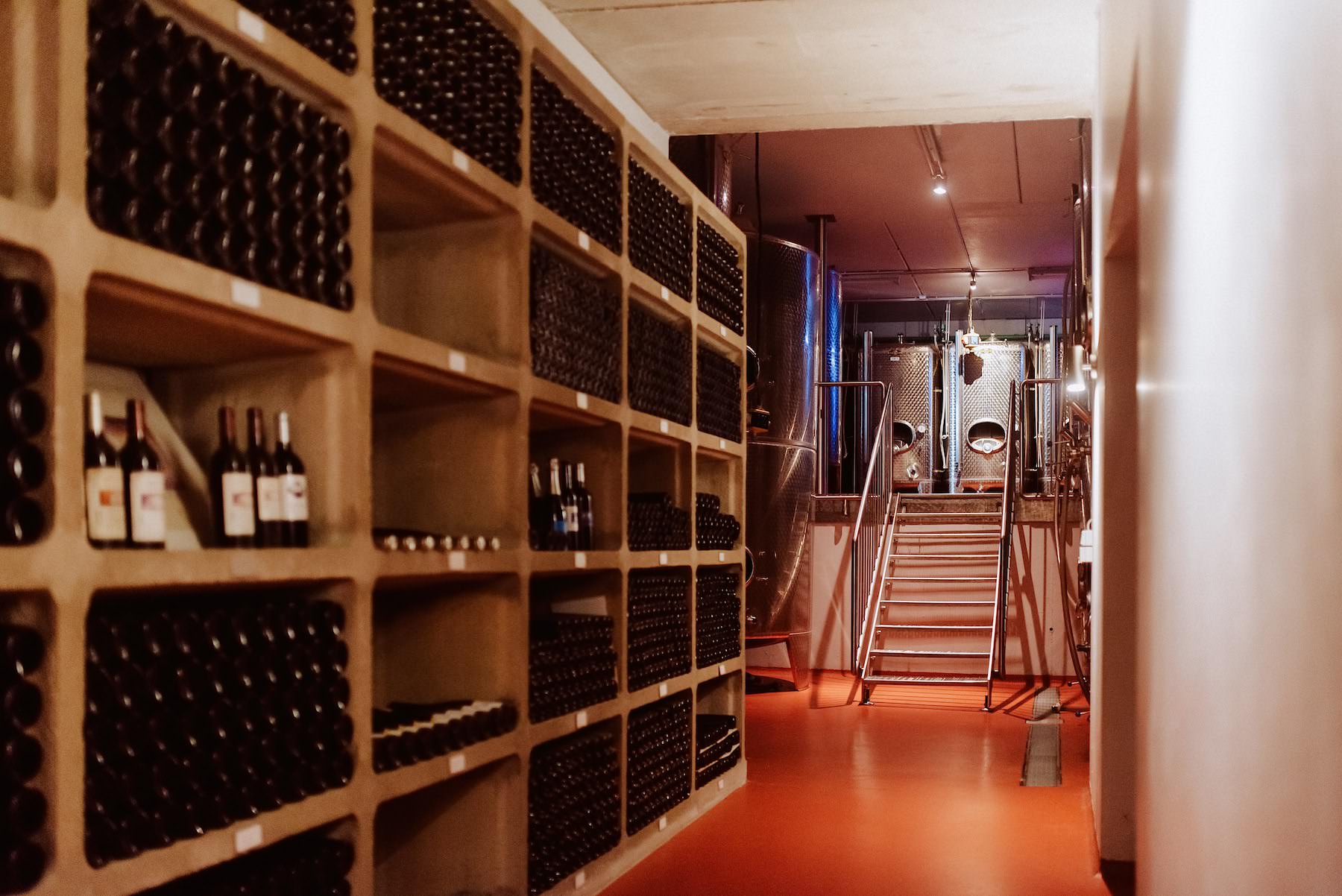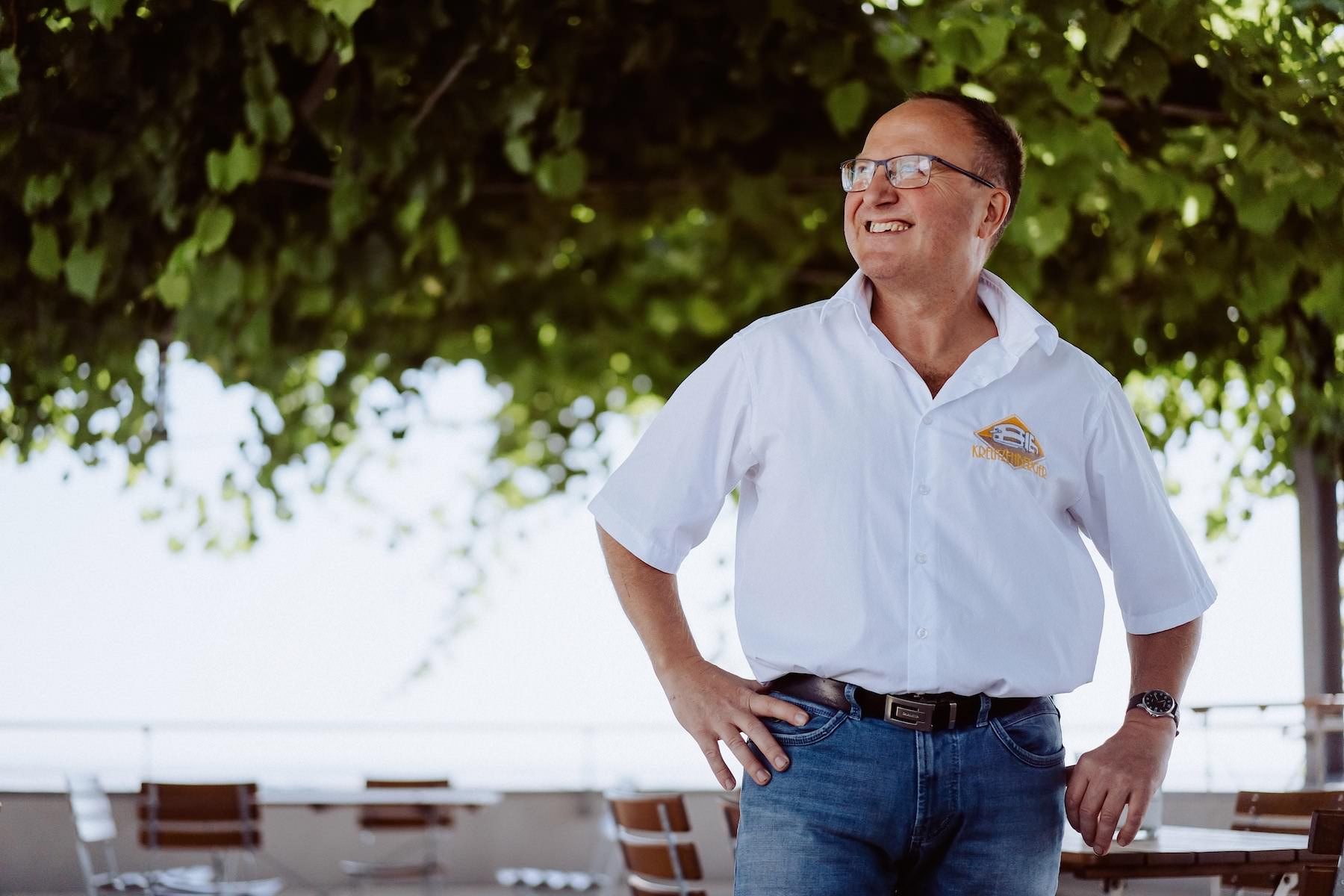In 1929, Emil Kreutzenberger was only 25 when he had a new Bauhaus-style building erected for agricultural and residence purposes and when the Bauhaus art and design school was only 10 years old and by far not as famous as it is today. Since then, the entrance to the village Kindenheim has been marked by a style icon of the New Objectivity.
An ocean liner’s bow towers above the vineyards. This is the impression you get as you approach the glaring-white façade of the house of the Kreutzenberger family. The wine-growing estate located at the main road in Kindenheim looks like a ship’s hull indeed—bold and without any frills, and a bit incongruous next to the other buildings in the village. However, Germany’s only Bauhaus wine-growing estate has belonged here for several decades—here at the northern part of the Palatinate Wine Road, where Emil Kreutzenberger designed many unusual things, such as this building in 1929.
„My grandfather used to think big,” Jochen Kreutzenberger says and starts to smile, because this seems quite understated. At only 25 years of age, Emil, the son of a wine-grower assigned his friend of the same age, the architect Otto Prott, with the task of designing a wine-growing estate made of reinforced concrete—right in the middle of the Great Depression. The other Kindenheim locals shook their heads incredulously. Emil did not only sell the old farm in the village, but he also sold the entire livestock and sugar beet fields. From this time onwards, he wanted to rely exclusively on wine, at a place that hosted the zeitgeist of the modern age: He had a house built in the style of the New Objectivity at the edge of the village, from which you have a view overlooking the hilly fields—a house that should be very different from the rest of the buildings of the municipality of 1000 local souls. With its flat roof, the curved windows in a row and a flagstaff, the building still seems like an ocean liner even today.
Today, the estate belongs to the 100 most important Bauhaus buildings in Germany—selected by the Bauhaus Kooperation Berlin, Dessau and Weimar. It is part of the ‘Grand Tour der Moderne’—a route that runs along the most important places of the legendary art and design school in Germany. Jochen has collected countless magazine articles and architectural reviews. Some 30 years ago, he already realized the importance of this architecture. Since then, the silhouette of Otto Prott’s design of the wine-growing estate is emblazoned on the labels of the bottles. “I can only imagine, just how visionary my grandfather’s decisions must have been at that time.” And how big an effort it must have been for him to defend his decisions about the family heritage against the criticism of others.

